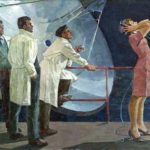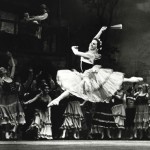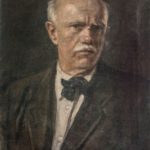Mikhail Nesterov is an outstanding itinerant artist

Self-portrait 1915
Mikhail Nesterov is an outstanding itinerant artist and master of the “soul of the people”
Mikhail Nesterov is an outstanding Russian itinerant painter, landscape painter and icon painter, a famous Soviet portrait painter.
Nesterov Mikhail created his own movement in painting “poeticized realism” and remained faithful to it, despite the revolution, the collapse of the country and the change of regime. During the period of itinerant movement, the painter’s work is filled with Orthodox mysticism. His paintings reflect the “special path” of God’s chosenness, a quiet charm with the beauties of Russian nature and the human soul.

On the mountains, 1896
Biography
Mikhail Nesterov was born on May 19, 1862, into an intelligent religious family. In 1880, Mikhail moved to St. Petersburg and entered the Academy of Arts for the course of Chistyakov. He studies painting with Pryanishnikov, Savrasov, Makovsky famous Itinerant artists.
Perseverance and uncompromising approach to his own work lead the young artist to success. In 1889, Pavel Tretyakov, a well-known philanthropist and gallery owner, acquired a painting by Mikhail Nesterov even before its official presentation at the 17th Traveling Exhibition. The collector will buy the second painting of the artist at the exhibition of the Itinerants a year later.

Saint Sergius’ labours 1896
Improving the style of writing, Nesterov develops a new direction, which he called “poeticized realism”, in which mountain ash, birch and aspen are miraculously combined with the spirituality of a person. Without breaking with realism, the artist approaches symbolism, shows the invisible world of dreams and visions on canvases.
Since 1890, Mikhail Nesterov begins to paint Orthodox churches.
He will devote more than 20 years of his life to church frescoes and icons. The works of this period of creativity reflect the individual position of the artist in search of God.
The October Revolution became for the master akin to the apocalypse. Returning from Armavir in 1920, he found that the workshop was ruined, paintings and unique archival materials were lost. Trying to overcome the feeling of catastrophe, Nesterov remains faithful to his ideals and beloved Orthodoxy, but now he writes the faces of saints and righteous people only behind closed doors. To stay in the profession, the artist was forced to change his role, and became an excellent portrait painter. In the last year of his life, Mikhail Nesterov was awarded high government awards and titles. On October 18, 1942, he died at the age of 80.

Youth of St. Sergius, 1897

Venerable Sergius of Radonezh, 1899

A Litte Fox 1914

Adriatic Sea, 1893

For a love potion, 1988

Great tonsure 1898

In a Secluded Monastery 1915

Lulling of Alexander Nevsky, 1900

Saint Russia

Silence, 1888

The Taking of the Veil 1898

Vision to the youth Bartholomew, 1890





